Hardy campers know that UK nights are often chilly, even in summer. So for camping in Britain or countries of similar climate, look for ‘three-season bags’ – designed to be warm enough for cool nights in spring, summer and autumn. (‘Four season bags’ keep your warm in winter, too.)
Here is our selection, all reviewed by Countryfile Magazine testers. We've split them up into some rough categories to help you find the sleeping bags best suited to you.
Not sure where to start? Jump to our three-season sleeping bag buyer's guide.
Best three-season sleeping bags at a glance
- Best for leisure camping and travel: Sierra Designs Night Cap 20
- Best sleeping bag for backpacking and bikepacking: Rab Solar Eco 2 sleeping bag
For more expert gear reviews, check out our full round up of the best sleeping bags for every camper.
Best Three Season Sleeping Bags in 2024 - reviewed
Sleeping bags for leisure camping
Robens Gully 900 sleeping bag
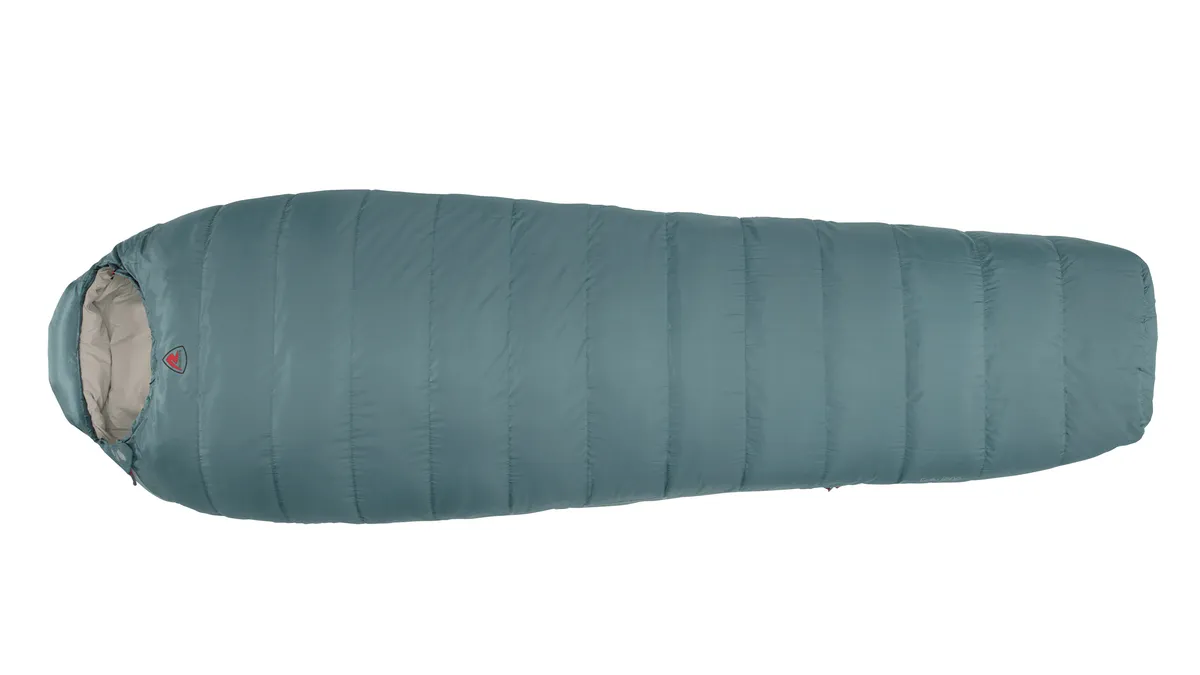
- RRP: £192.99
- Comfort: -4C
- Weight: 1635 g
- Pack size: 32 x 23cm
- Fill: 900 g Thermo Hybrid Down. Top: 50% RDS certified duck down 75/25 and 50% MicroThermo Ball / Bottom: MicroThermo Ball, 600 FP, 100% polyester
- Fabric: 50-denier polyester
The fill in this delightfully comfortable bag feels, at first squish, like 100% down – but in fact shrewdly combines down with synthetic insulation. The upper layer of the bag is a 50:50 split, so should the down get damp, you can still rely on the synthetic to keep working. The underneath – the bit you lie on – is 100% synthetic. Thoughtfully, parts of the bag likely to get wet – hood and feet, which may touch a wet flysheet – are 100% synthetically insulated.
There are some useful features, such as a pair of large interior mesh pockets: a handy place to stow a head torch or valuables, if you’re kipping down with pirates.
For a bag with these clever design touches it’s disappointing to find that the hood is rather small, barely covering your head. If you choose to push a small inflatable pillow into the hood’s zipper pocket designed for the purpose, you find there’s no slack left in the hood at all; so you’ll have to pull on a warm hat instead.
It’s a pretty substantial weight and bulk (1635g, 32 x 23cm) so you probably won’t want to carry it far on foot.
We tried the four-season Gully 1200. It’s the same basic design as the Gully 900 but with added insulation for four-season use and a comfort rating of -16C, and of course a bit heavier and bulkier than the 900 (1985 g, 34 x 27 cm). JP
OUR VERDICT: Airy and pleasant to sleep in; shame about the hood. Suitable for carry-in camping, leisure camping and travel.
What is a 3-season sleeping bag?
You'll see many sleeping bags referred to as one, two, three of four-season bags.
1-season sleeping bags are for the kind of warm summer nights we seldom get in the UK. You might also use them indoors; for example, in youth hostels.
2-season sleeping bags – for summer, plus the warmer nights in late spring and early autumn; usually not warm enough for chillier UK summer nights.
3-season sleeping bags – for cool to cold nights, up to a few degrees below zero. Perfect for UK summer camping holidays with unreliable weather!
4-season sleeping bags – for really freezing winters nights with temperatures as low as -10C
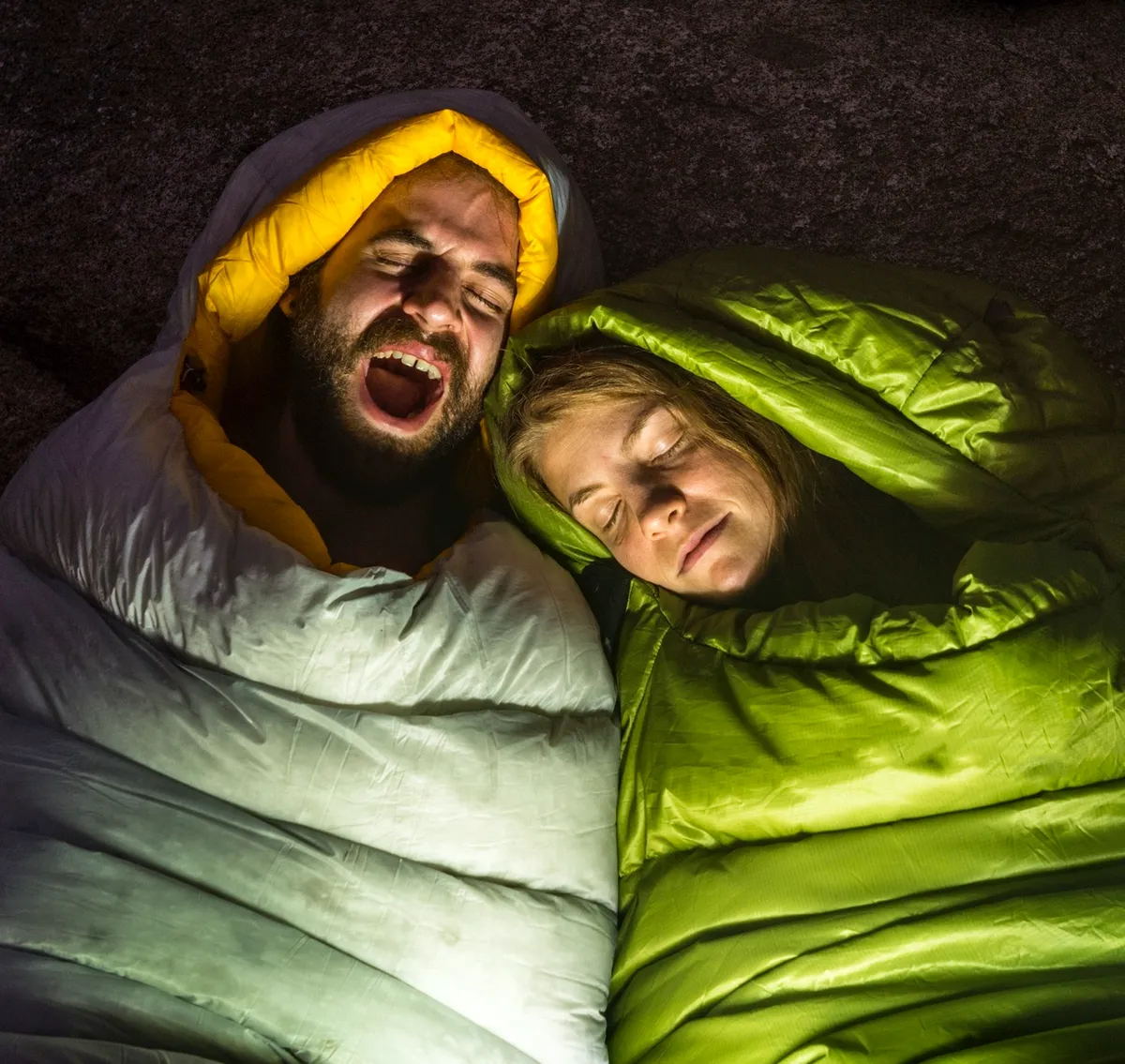
Wild Country Burbage Single Sleeping bag
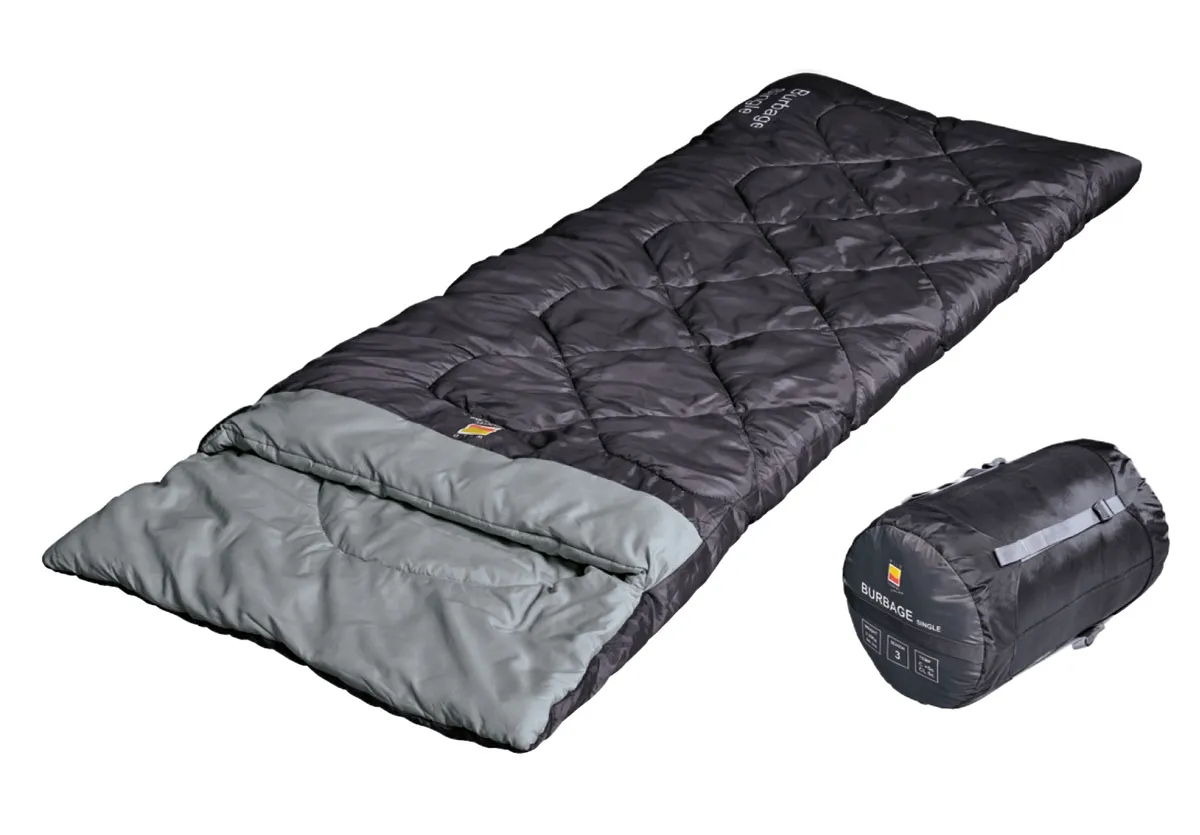
- RRP: £70
- Weight: 2350 g
- Comfort rating: 5C
- Fill: Synthetic – polyester hollow fibre
- Fabric: Shell – polyester ripstop; lining – pongee polyester for comfort
- Pack size: 46 x 28cm
In the relatively affordable range of the price scale, this spacious bag will suit those camping with a vehicle. Unlike mummy-shaped bags – which taper towards the feet – the Burbage is roomy. There’s plenty of space to turn and move, especially for your feet. Rated 5C for comfort, there are warmer bags on test, and there’s no hood in which to burrow on a cold night. On the other hand, the open design also allows you yet more free movement, and if it’s chilly you can always add a blanket or wear a warm hat to bed.
When it’s warm, you can cool down by unzipping the bag all the way along the side and even at the foot, opening it out to make a quilt.
The 100% synthetic fabric and fill are soft; like most, they have a characteristic rustle.
The bulk (46 x 28cm packed) and weight (a whopping 2,350 g) will put off backpackers, but will matter less to family campers – unless you have trouble squeezing everything into your vehicle. JP
Note: Also available in a double version.
OUR VERDICT: Bulky but simple and flexible option if you are camping with a vehicle
Suitability: our categories
Leisure camping – Camping with a car or van
Carry-in camping – Our term for lugging your gear over relatively short distances to a camping spot or bothy, etc.
Travel – For adventures on the move by bus, train or plane
Backpacking – Multi-day walking during which you carry all you gear
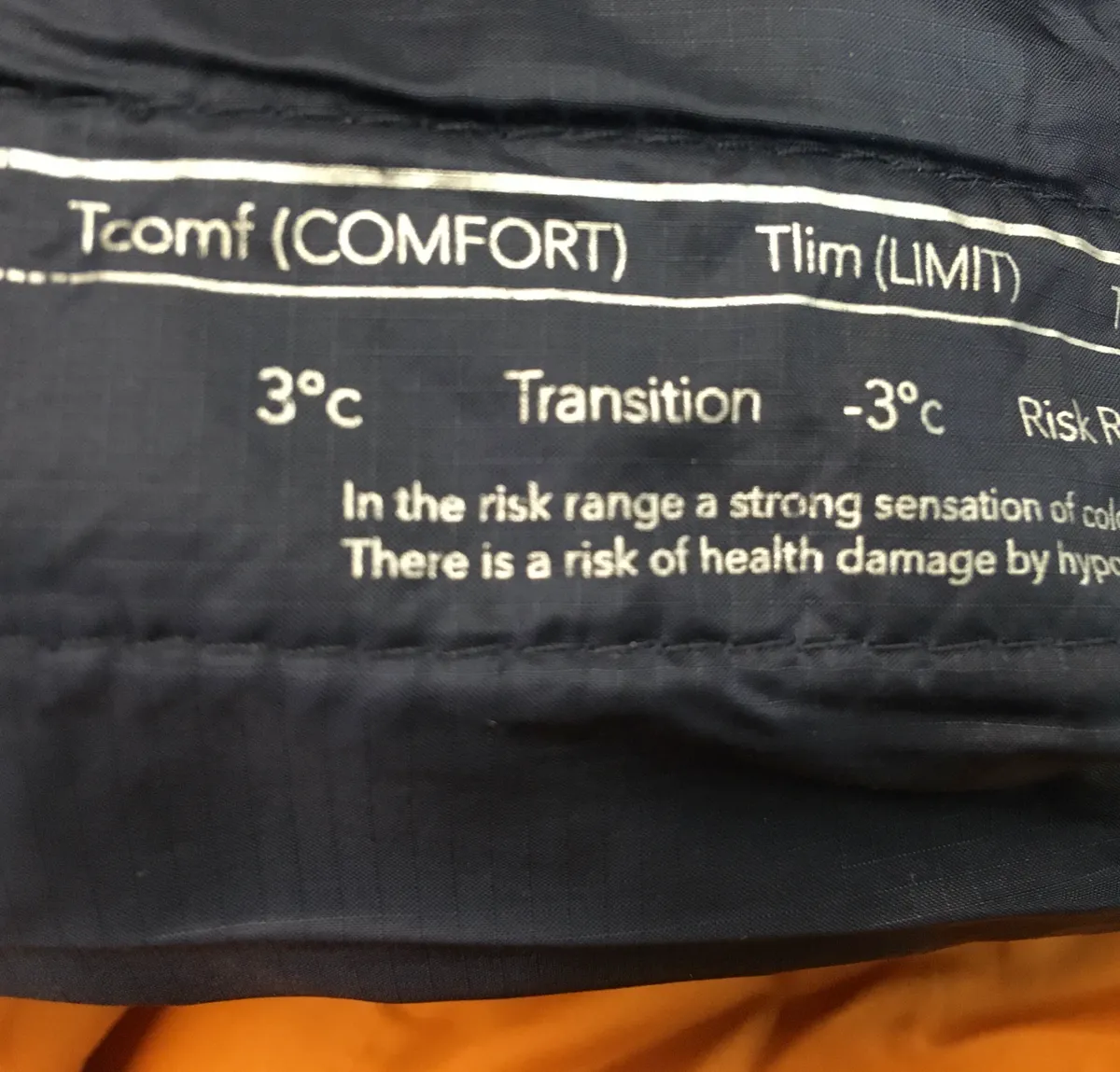
Sleeping bags for leisure-camping or travel
Lighter and a bit more compact than the sleeping bags above – suitable for travelling, or multi-day backpacking.
Snugpak Travelpak 4
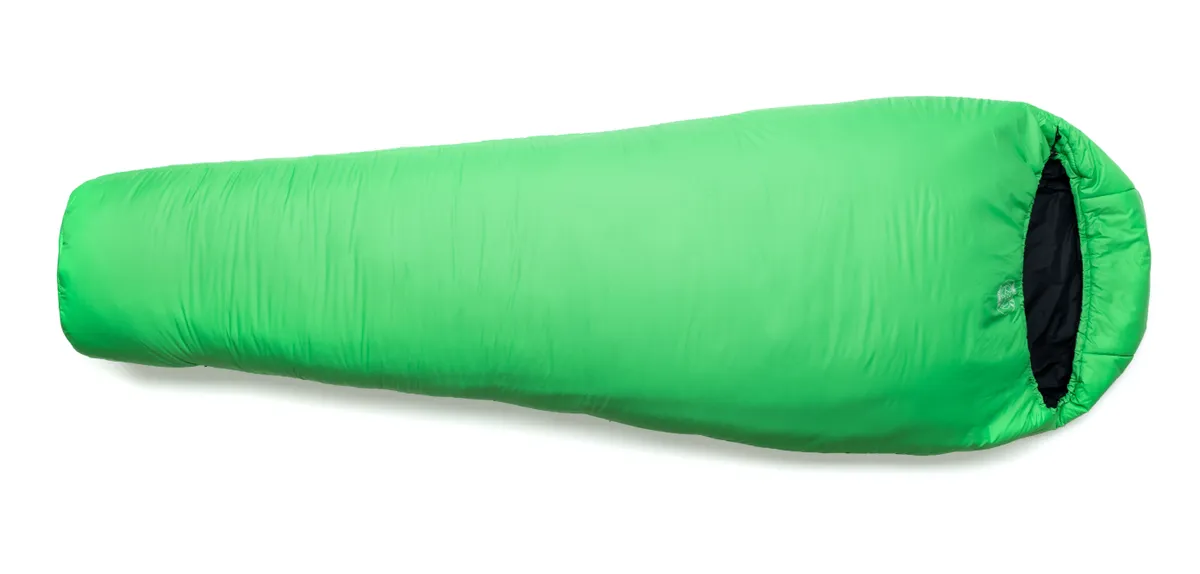
- RRP: £68
- Weight: 1900 g
- Pack size: 34cm x 24cm
- Comfort: -7°C
- Fill: Synthetic – Travelsoft, polyester
- Fabric: Rip stop polyester outer; antibacterial polyester inner
That’s a competitive price for a warm, three-season bag. It's bulky and heavy for multi-day walks, but is doable for walk-in camps and nights under the stars; or sling in the boot of your car.
Some handy extra features will appeal to travellers: the zipped internal pocket, antibacterial treatment to keep it smelling fresh, even an optional mosquito net in the hood. It's pretty cosy, with an insulated shoulder baffle to keep out chilly air, and a large hood. If you overheat, a zip down to your shins lets in cool air.
Interested? Then read more in our full review. JP
OUR VERDICT: Bulky, heavy, but versatile – and a great price
Alpkit Cloud Peak 300
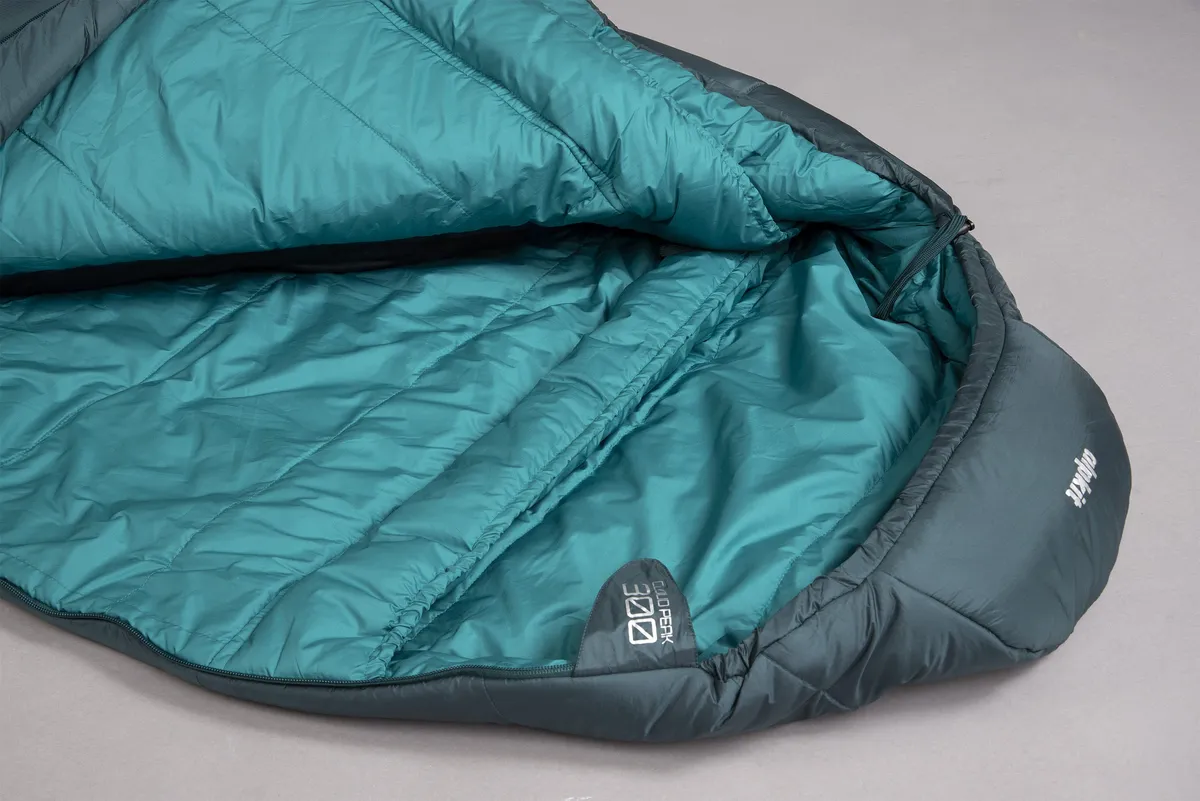
- RRP: £99.99
- Weight: 1574 g
- Comfort: 0 C
- Fill: Synthetic – Thermolite Ecomade (recycled polyester)
Fabric: 40D ripstop nylon outer; 20D polyester inner. - Pack Size: 37cm x 25cm (uncompressed)
This handsome sleeping bag is a relatively affordable option for adventures from spring to autumn.
The full-length zip is a useful way to vary temperature: if you are overheating, unzip by the feet to let in cool air, or open the whole thing up.
On cold nights, two cinches help you keep the chill out: one tightens a baffle (a kind of insulated collar) over the shoulders, and the other a cosy hood.
The synthetic fill will keep insulating even when damp. It’s also feels pleasant and reasonably breathable to sleep in.
The hood is a bit small to accommodate an inflatable pillow, so you’ll have to use one outside the bag.
Like most synthetic bags it can be cleaned quite easily in a washing machine – another big advantage over down.
The stuff-sack has two sturdy straps to compress it. While it remains bulkier than down-filled equivalents, it fitted snugly into the bottom pocket of a 65-litre backpack.
I would prefer a lighter bag for multi-day backpacking. It’s nearly 500g heavier than the Mammut Perform Fiber, its closest comparison on test; but then again, it’s half the price.
The hood is decent size, albeit not big enough to use a small inflatable pillow inside it and still cover your head easily. JP
OUR VERDICT: Affordable and good looking, tough and easy to look after. Suitable for carry-in camping, leisure camping and bivvying.
What is a sleeping bag's 'comfort rating'?
Sleeping bags are assigned a comfort rating, found on the packaging or often printed on the bag (see pic).
The comfort rating is the minimum air temperature at which a typical user should remain comfortable, ie not feeling cold.
But it's a bit more complicated than that – for a full explanation, scroll down to our buyer's guide.
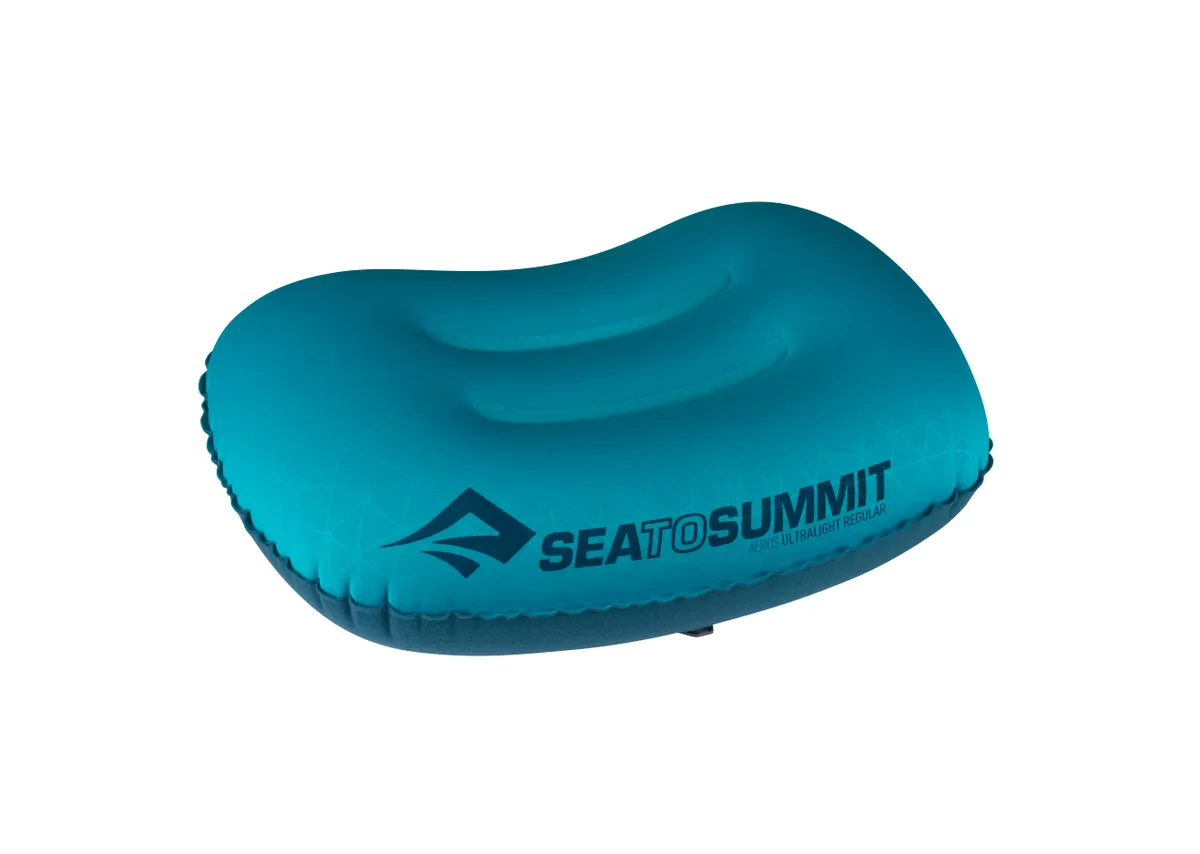
Deuter Orbit 0°
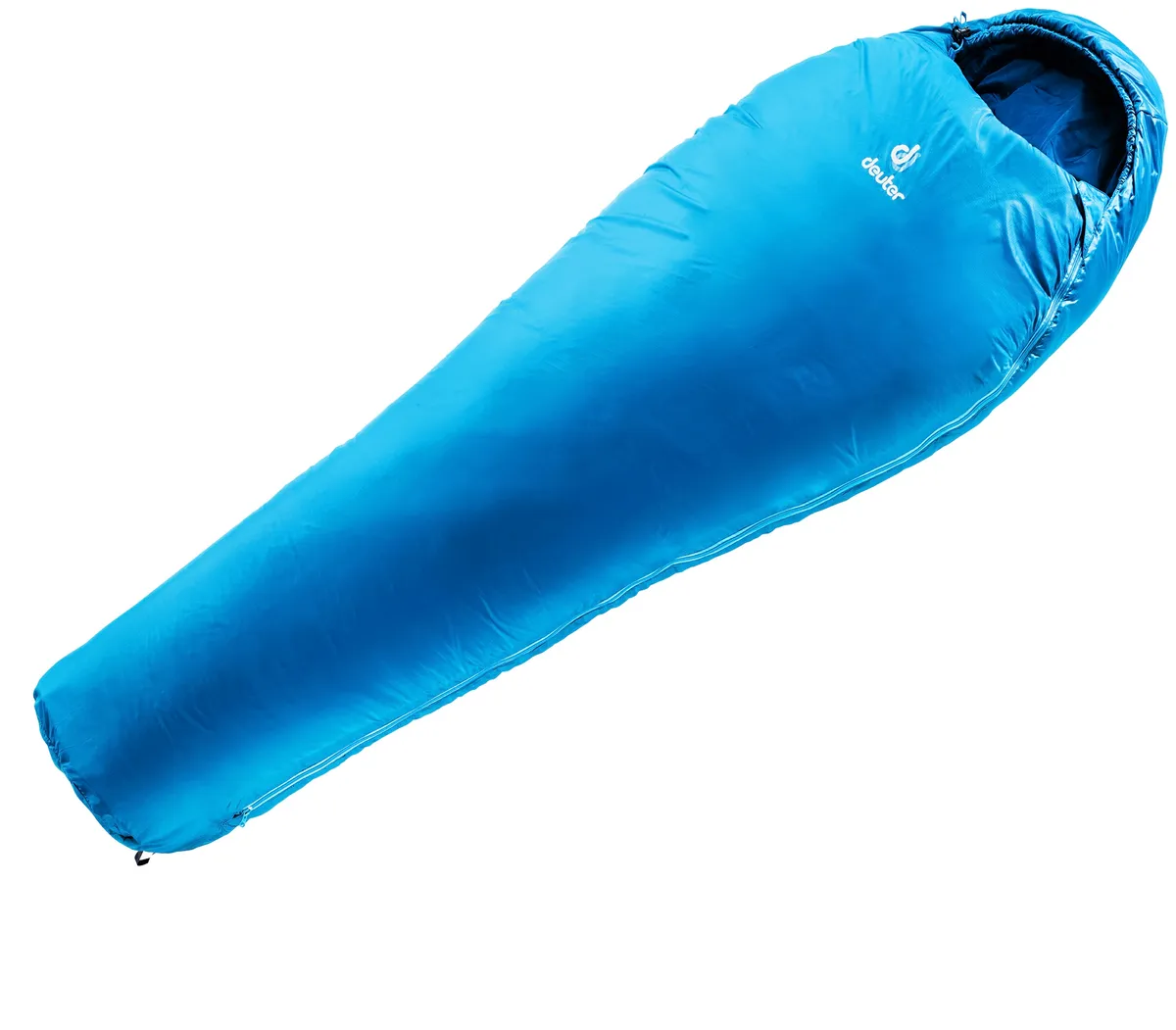
- RRP: £100
- Comfort rating: 0C (men); 5C (women)
- Weight: 1450g
- Pack size: 32 x 24cm (Our measurement; Deuter quote 44 x 21 cm)
- Insulation: Synthetic – High-Loft Hollowfibre
- Fabric: polyester – Poly Lite Soft
This is functionally similar to the Alpkit Cloud Peak 300 sleeping bag, with the advantage that zip is so long that the whole thing canoe opened out and used like a quilt on warmer nights.
A ‘warmth collar’ – an insulated baffle lining the bag – can be tightened to keep drafts out. The hood is decent, though not large enough to use a camping pillow inside it.
The synthetic fill will keep working even when wet. A full-length zip helps you let in cool air when you need to.
With a robust polyester outer fabric, it’s tough, durable and easy to wash.
It’s a fairly substantial weight at 1,450g – not ideal for backpacking, but perfectly fine for carrying a few miles to a bothy or camping spot for a night or two; and well suited to leisure camping. JP
Our verdict: Solid performer – an affordable, warm and durable synthetic-fill bag
Sleeping accessories part 1: Inflatable pillows
If you have plenty of room in your car, a pillow from home will be a welcome camping luxury, but that’s not an option if you are short of packing space, or carrying your gear in a backpack.
You can improvise a pillow by putting a fleece into a stuff sack. But a good inflatable pillow is definitely more comfortable, and you may think worth that extra expense. (Though you may rue that cost if they spring a leak; they may be tricky to repair.)
Look for a sleeping bag with a hood large enough for both a camping pillow and your head, or with an external pillow pocket. That way your pillow won’t slip away in the night.
The Aeros Ultralight pillow weighs only 60g and packs down to the size of a tennis ball. The regular sized pillow (large is also available) tucks nicely into many mummy-style sleeping bag hoods.
Read our complete list of best camping pillows.
Outwell Sleeping Bag Oak Lux
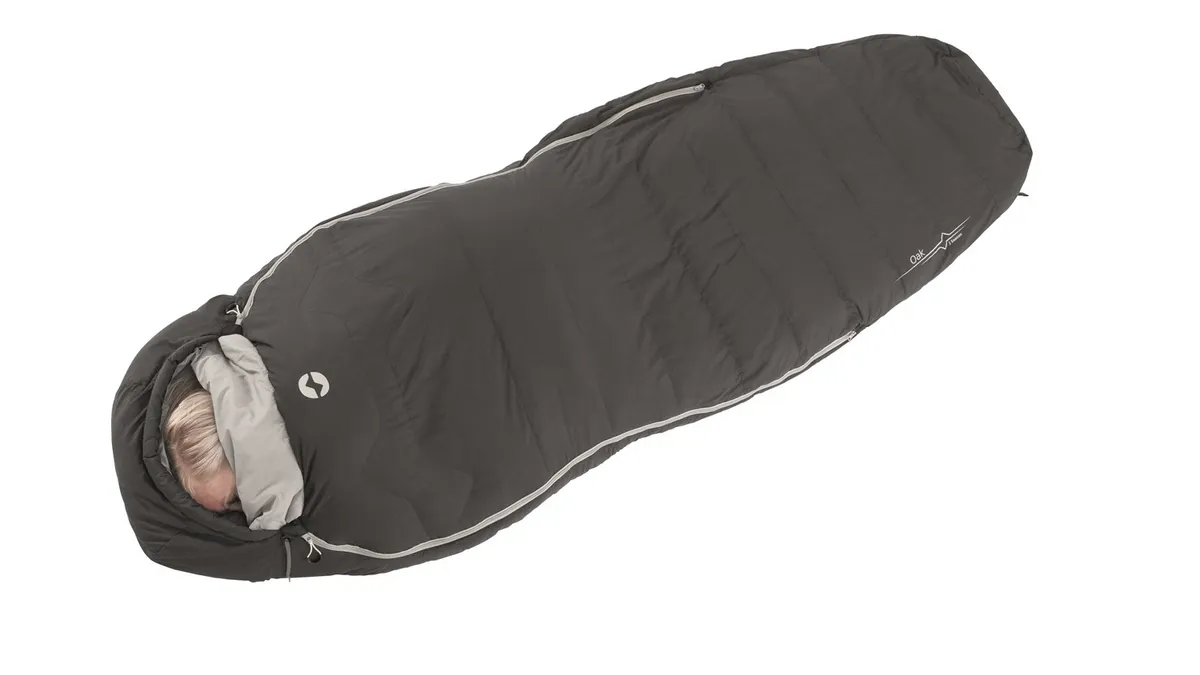
- RRP: £172
- Comfort: -3C (men); 2C (women)
- Weight: 1365 g
- Fill: Beneath you, Isoball polyester fibre; top layer – 50% RDS duck down, 50% polyester.
- Fabric: 50 denier polyester
- Pack size: 18 x 36 cm
Generosity and comfort are the words that springs to mind with the Oak Lux. The hourglass shape provides bags of room. A deep hood keeps your head warm and provides plenty of space to slot a pillow into the sleeve provided. The hood can be cinched tight on cold nights, when an insulated flap at the top of the bag can be unfolded and wrapped around your shoulders like a muffler.
Beneath you is a layer of 100% synthetic fill; above, a 50:50 blend of duck down and polyester. The down gives an airy feel; the synthetic fill, moisture-proof insulation. Outwell are among a few outdoor companies who quote different temperature ratings for men and women; they say women will typically feel comfortable in this bag down to 2C, and men to -3C.
Unusually there are two long zips, one on either side; Outwell say they are positioned so that when you sleep on your side, you won’t end up resting on one. But they are also useful for ventilation on those mornings when the early sun warms up your tent.
It’s surprisingly compact when tucked into its stuff-sack, and the weight (1365 g) is doable for carry-in camping, if heavier than ideal for multi-day backpacking.
The bag can be machine-washed, with some care; restore the loft of the down by tumble-drying. JP
OUR VERDICT: Spacious, versatile and very pleasant to sleep in. Suitable for carry-in camping, travel and leisure camping.
Sierra Designs Night Cap 20 – overall winner
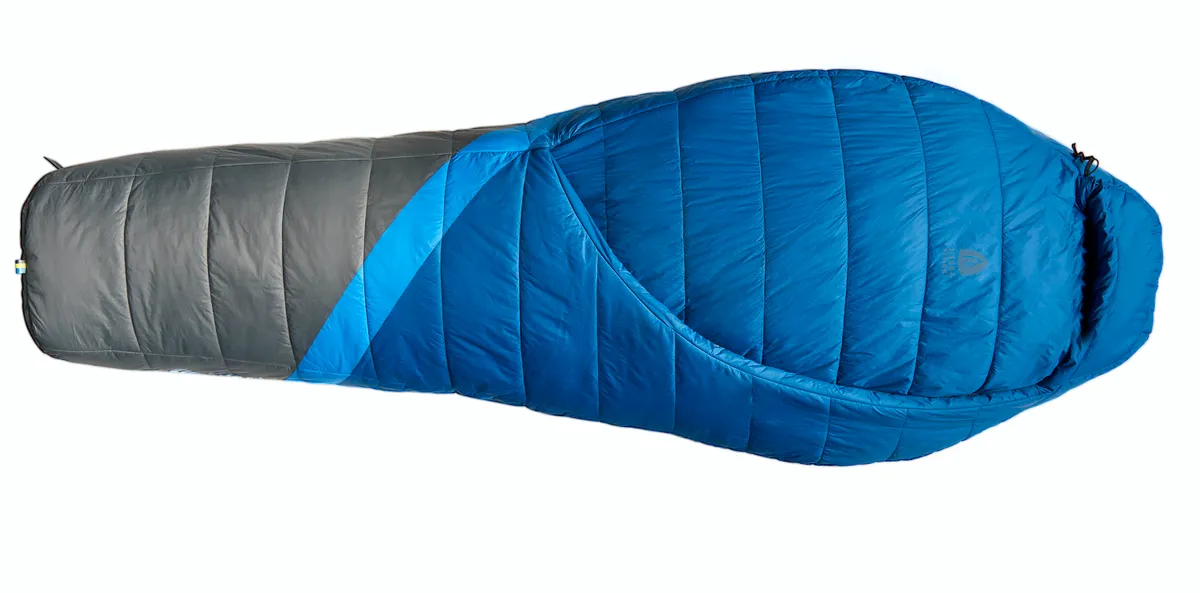
- RRP: £150
- Weight: 1,388 g
- Pack size: 38 x 19 cm
- Comfort: -1.6C
- Fill: SierraLoft Eco Synthetic Insulation
- Fabric: 20d recycled nylon ripstop outer; 20d recycled nylon taffeta inner
This ingenious zipless design is a sort-of hybrid sleeping bag/quilt. When it’s cold, simply tuck the loose end in and curl up in it as you would with a duvet at home; cinch the hood down around your head for extra warmth. If you’re hot, open the flap to let in some cool air. Or push your foot out through a sleeve near the bottom of the bag.
Both fabric and fill are made from recycled plastics. The synthetic insulation makes it easy to wash and dry. The only drawback is that at 1388 g, it's a little bit heavier than ideal for backpacking.
A really smart idea – no doubt soon to have its imitators. JP
Find out more in our full length review.
OUR VERDICT: Innovative design – spacious, versatile and comfortable
Sleeping accessories part 2: Sleeping bag liners
Adding a thin liner provides a bit of extra warmth, or a cool cover on hot nights, and keeps your sleeping bag clean, so you won’t have to wash it so often. (That’s particularly handy with down bags, which are a faff to clean – see buyer's guide, below.)
It’s quite easy to make your own cotton liner from an old sheet. Alternatively, silk sleeping bag liners are very pleasant to sleep in, and extremely light – great for backpackers who are trying to keep their load light.
Sea To Summit make cotton liners from £28 (minimum weight 325 g) and silk liners (pictured) from £47 (minimum weight 125 g). Other brands offering sleeping bag liners include Rab and Lifeventure.
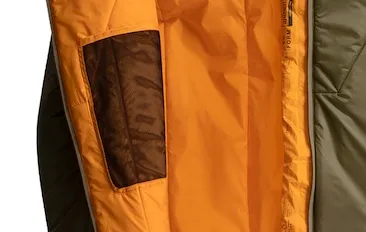
Best 3-season sleeping bags for backpacking and bikepacking
If you are counting the grams and not the pennies, these could be for you. Ultralight gear doesn’t always come cheap – but if you can afford to invest, these options will help lighten your load.
Sea to Summit Spark SpII -2°c
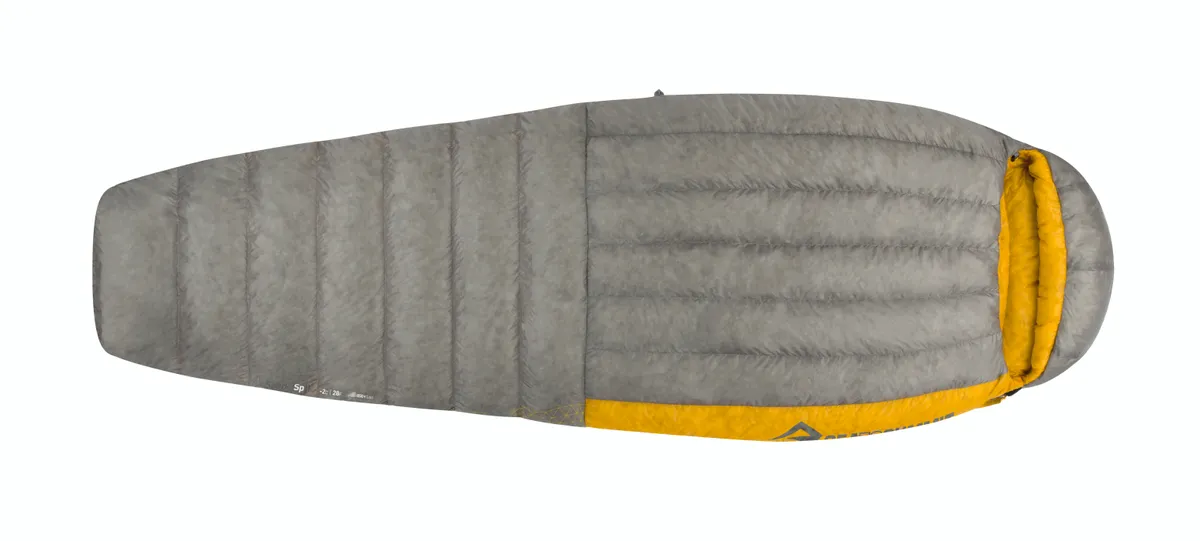
- RRP: £365.0
- Weight: 490g
- Insulation: Ultra-Dry Down 850+ Loft
- Fabric: Ultralight 10D Nylon Shell
A technically accomplished bit of kit – and with the price tag that goes with it. Ultralight backpackers will love the low weight of just 490g, and the tiny volume – it stuffs down to just 29 x 13cm.
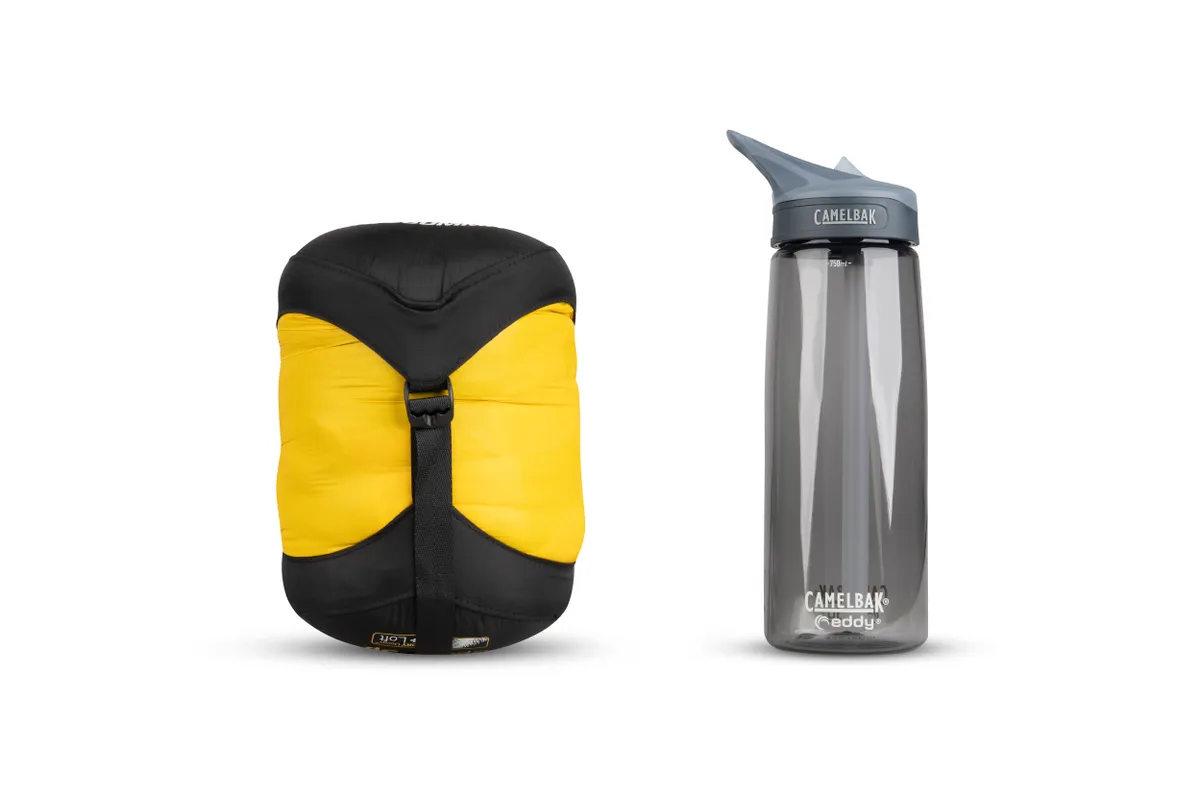
The high-quality down is strikingly warm, but be prepared to layer up on cold nights.
The drive to save weight is evident in the fine fabric; which nevertheless seems tough. Other weight-saving measures are less functional. The shape tapers to a rather narrow fit around the legs, which I didn’t mind, but some might find that claustrophobic. With a zip that terminates at he hips, you can't cool off overheated legs without removing them from the bag.
The result is a bag that is wonderfully light and warm – perfect in the right conditions, but lacks a wee bit of versatility. Various sizes and warmth ratings also available. JP
Intrigued? then read our full length review.
OUR VERDICT: Ultralight, ultra-compact, specialist backpacking bag for serious backpackers with a few quid spare
TIP
If your bag has an internal pocket, store your phone there overnight. The warmer temperature will help preserve the phone’s battery life
Rab Solar Eco 2 sleeping bag
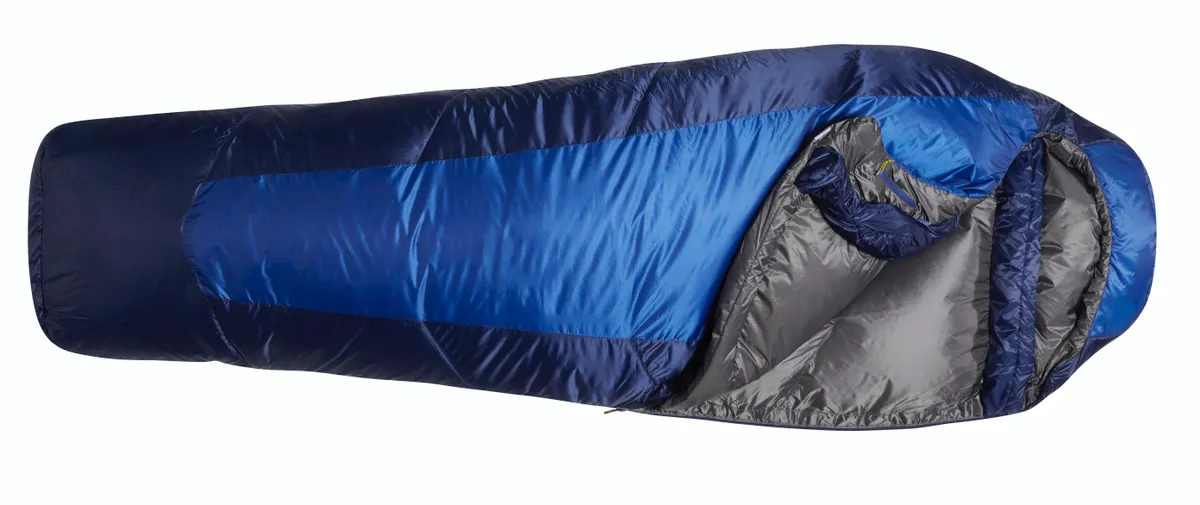
- RRP: £145
- Weight: 980g
- Pack size: 35cm x 20cm
- Comfort: -2°C
- Fill: Stratus, 100% recycled polyester
- Fabric: Recycled polyester Atmos outer fabric
At less than a kilo and just 35cm x 20cm packed, Rab’s new Solar Eco 2 is both light and compact, making it our top synthetic sleeping bag for trekking. Unlike down bags, this fully synthetic bag will continue insulating even when damp.
The comfort rating of -2C is enough to keep you cosy on all but the chillier spring and autumn nights. A shoulder baffle can be cinched over your shoulders, to keep cold air out.
Another cinch tightens the hood, which could be more generously cut. In warm weather the long zip lets in cool air. For the eco-conscious, both fabric and insulation are 100% recycled. JP
Sounds good? Then read our full review.
Our verdict: Lightweight and compact synthetic sleeping bag for the eco-conscious camper
Mammut Perform Fiber Bag -7C
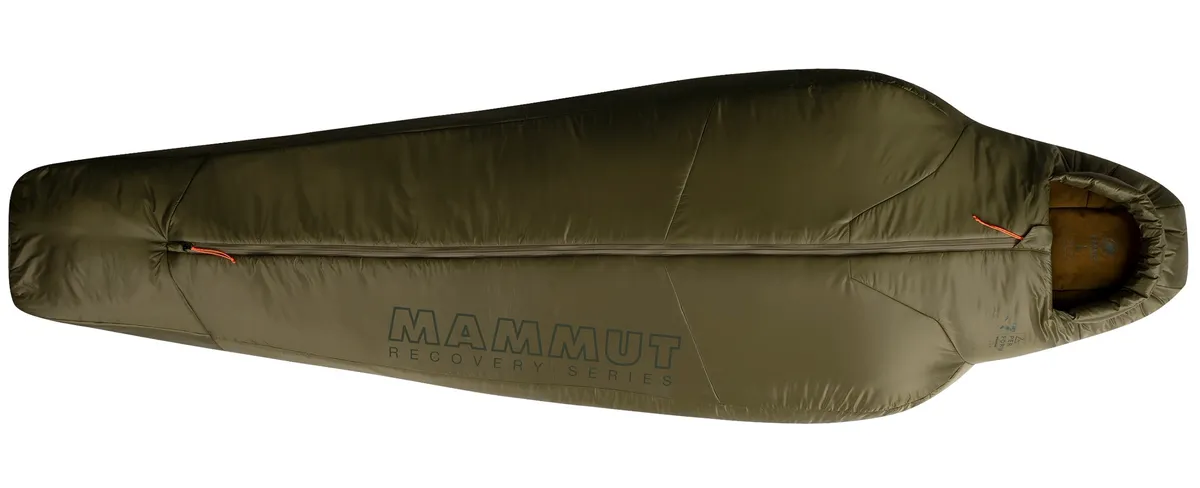
- RRP: £200
- Weight: 1100 g
- Comfort: -7C
- Fill: Synthetic
- Pack size: 32cm x 29cm
- Fabric: polyester, polyamide
This smart-looking bag has a whiff of adventure about it. It’s may way more than the down bags on test, but it is light for a three-season synthetic bag, and – if you’re not an ultralight-gear obsessive – it is light enough for multi-day backpacking. It brings with it the benefits of synthetic insulation: it stays warm even when wet, and is easy to wash and dry. It’s also warm enough for chilly nights. A shoulder baffle excludes drafts and the hood is comfortably large enough to cover your head and accommodate a small travel pillow.
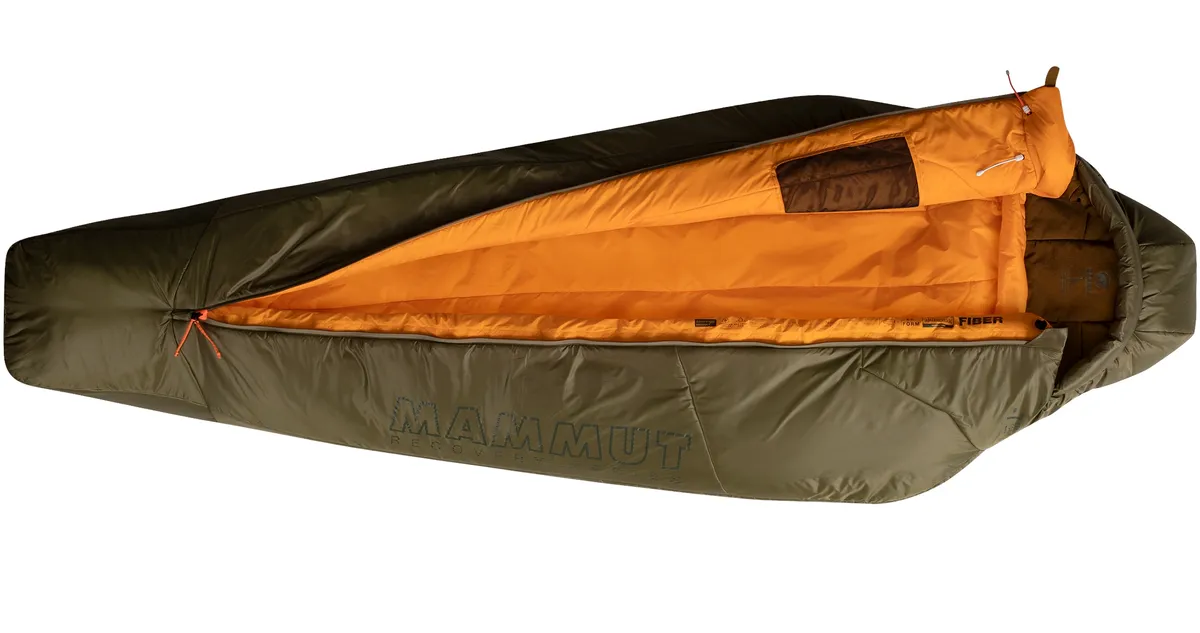
Use the long 160cm zip to let in cool air when you need to. The zip is positioned centrally, which means that if you turn on your side in the might, you won’t end up lying on the zip.
Even when crammed into a stuff-sack, synthetic-fill sleeping bags are always bulky when compared to down-fill ones. It’s a shame the stuff sack has only one compression strap – another might have helped squish it down a bit; but nevertheless it fitted easily into the bottom part of a 65-litre volume backpack. JP
OUR VERDICT: Warm, light, versatile easy-care synthetic bag
Therm-A-Rest Parsec 20F/-6C Sleeping Bag
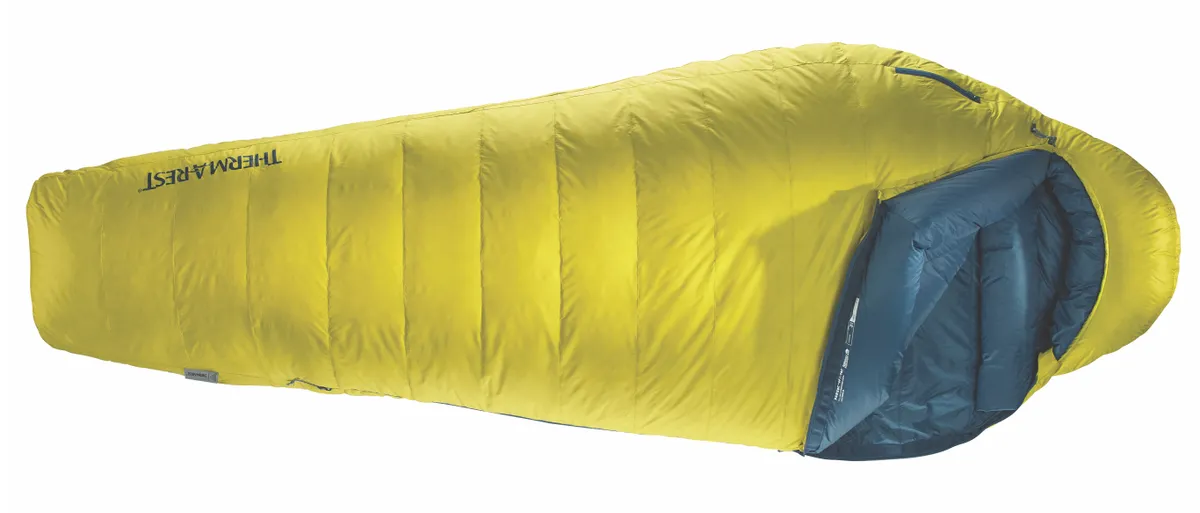
- RRP: £304.99
- Comfort: -6C
- Weight: 810 g
- Fill: Goose down, Nikwax hydrophobic treatment, 800-fill; RDS-certified
- Fabric: Recycled 20-denier nylon ripstop, with DWR treatment on the outer.
- Pack size: 18 x 24 cm
This deliciously comfortable down bag is roomier and warmer than Mammut’s Spark SpII -2. It may be some 300g heavier, but it’s still lightweight, at only 800g (regular size).
On really chill nights an insulated ‘draft tube’ (or baffle) can be tightened around your shoulders. The well insulated hood is big enough to accommodate a small inflatable pillow, with plenty of slack left to burrow your head into on a cold night. It's a very pleasant airy and warm sensation, with a soft fabric made of recycled nylon.
The down is treated with a ‘hydrophobic’ or moisture-repelling substance, designed to help it retain its loft and keep insulating even in damp conditions.
A pair of stretchy straps can be used to secure the bag to your sleeping mat, so you don’t slide on to the cold ground while you sleep.
A small exterior pocket is a good place to stow phone, torch or other items.
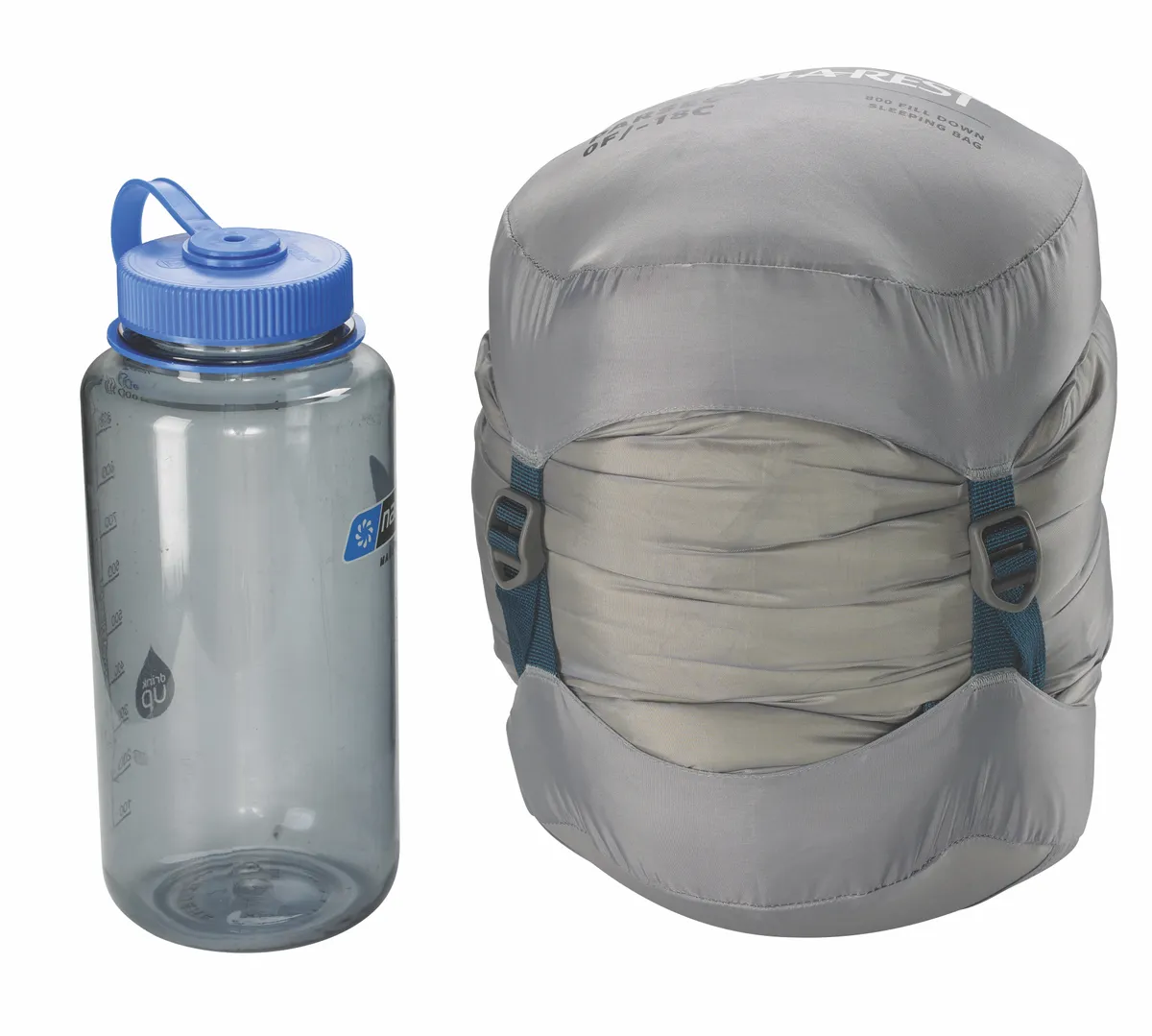
When it’s time to pack, the bag fits easily into an excellent stuff sack with four sturdy cinches to help you compress it to a compact 18cm x 24 cm – for scale, that's a litre bottle above.
OUR VERDICT: Luxurious, warm, light and compact. Suitable for backpacking, bike packing, leisure camping and carry-in camping
For more cosy outdoor gear, check out our reviews of the best down jackets.
Three Season Sleeping Bags: Buyer's Guide
That's all our reviews for now. Next up, some useful info for anyone thinking of investing a sleeping bag.
1. Seven things you need to know about sleeping bag ‘comfort ratings’
So – how do you know exactly how warm your bag is? Sleeping bags are assigned standardised ‘comfort rating’. What does that mean?
- Comfort rating is the temperature minimum at which a typical user should remain comfortable, ie not feeling cold.
- Testing for comfort ratings was standardised in 2017 – if you are interested, read more here…
- Comfort ratings tend to assume that you are wearing light clothing in the bag, such as a baselayer, and sleeping on a good quality mat – which insulates you from the cold ground.
- Some brands give different comfort ratings to men and women, as the research apparently says that women will tend to need slightly warmer sleeping bags.
- This hints at an obvious truth – that some feel the cold more than others. Your build and metabolism obviously play a part in this.
- IMPORTANT! In real life, you may find that you feel the cold at a higher temperature than the comfort rating. At home, I sleep under very light duvet even in winter – but when I’m outdoors, I still prefer a sleeping bag with a comfort rating well above the actual real life temperature. I recently slept in a stone barn in Dartmoor at a temperature of around 8C, and did not overheat in a bag with a comfort rating of -6C. The point is: Don’t assume that you will definitely be comfortable at the official ‘comfort’ temperature. The comfort rating is a rough guide only and not to be taken too literally.
- Note that sleeping bags also tend to be assigned a ‘limit’ rating – the minimum advisable temperature to keep hypothermia at bay – and an extreme rating: the temperature at which the average person can remain for six hours without risk of death from hypothermia.
2.What's best – synthetic or down-filled sleeping bags?
This is not a straightforward answer – there are genuine pros and cons to both down and synthetic insulation. It probably depends on where and how you want to use your sleeping bag.
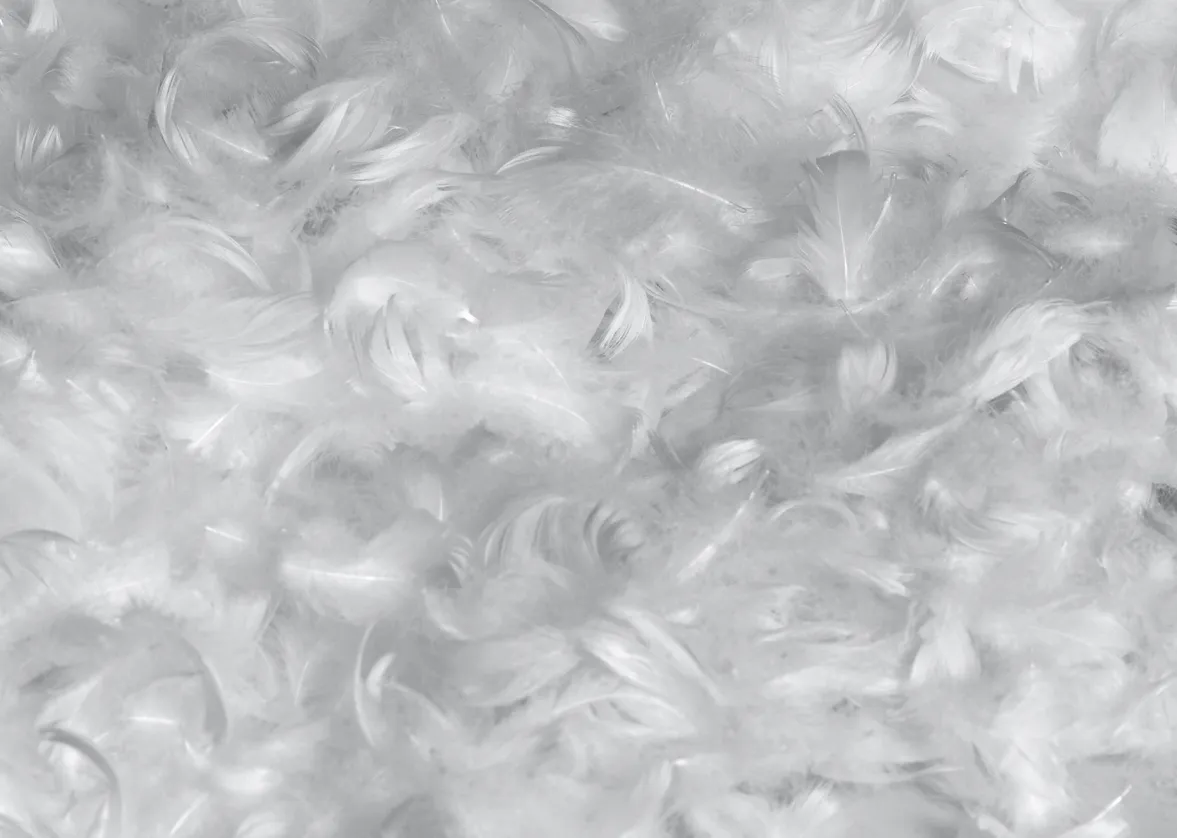
Down-filled sleeping bags: Pros
- is lighter than synthetic insulation – and high-quality down is much lighter. Few three-season synthetic bags weigh less than 1000 g – whereas down bags may weigh as little as 500 g
- is more compact when compressed, taking up less space in your pack
- has a light and airy texture is very pleasant to sleep in
- is highly breathable
- may be treated with ‘hydrophobic’ substances to repel moisture, allowing it to continue insulating in damp conditions
- is an organic material, which biodegrades naturally; some down may be recyclable
Down-filled sleeping bags: Cons
- is expensive
- is much more complicated to wash than synthetic-fill sleeping bags (see below);
- is not as warm when damp – moisture makes those tiny fibres stick together, closing pockets of space that normally trap warm air. (Note; some sleeping bags have down treated with hydrophobic (moisture-repellent) chemicals, improving its performance in damp conditions, which leads neatly to...)
- is sometimes treated with chemicals made using environmentally harmful PFCs. Check before you buy
- may become smelly after repeated use and exposure to moisture
- may not be responsibly sourced: some down suppliers have been known to harvest from live birds. Look out for the RDS (Responsible Down Standard) logo when shopping for a down sleeping bag, or check the brand’s policy on sourcing the down they use
- typically, down sleeping bags may not perform at their best for as long as synthetically insulated ones, though careful use can prolong life
- for example, down bags may only be kept compressed for short periods, or the down will lose its loft
Synthetic-fill sleeping bags: Pros
These sleeping bags are filled with insulation composed of synthetic fibres, usually polyester.
- works well even when damp
- is easy to wash
- is less expensive
- is highly durable
- is vegan friendly
- recycled (and recyclable) synthetic insulation is available
Synthetic-fill sleeping bags: Cons
- is heavier than down; three-season bags under a kilo are hard to find
- is bulkier than down, taking up more space in the your backpack
- is essentially plastic, biodegrading extremely slowly, if at all, and may be difficult to recycle
3. How to wash and dry a down bag
Washing down-fill sleeping bags and jackets is a faff. Try not to wash them too often. But if you love your down bag of jacket, they are worth washing occasionally, and certainly before dirt becomes ingrained.
No matter how appealing the idea of a down sleeping bag is, you will have to wash it as some point, so you might as well know up front what you are in for.
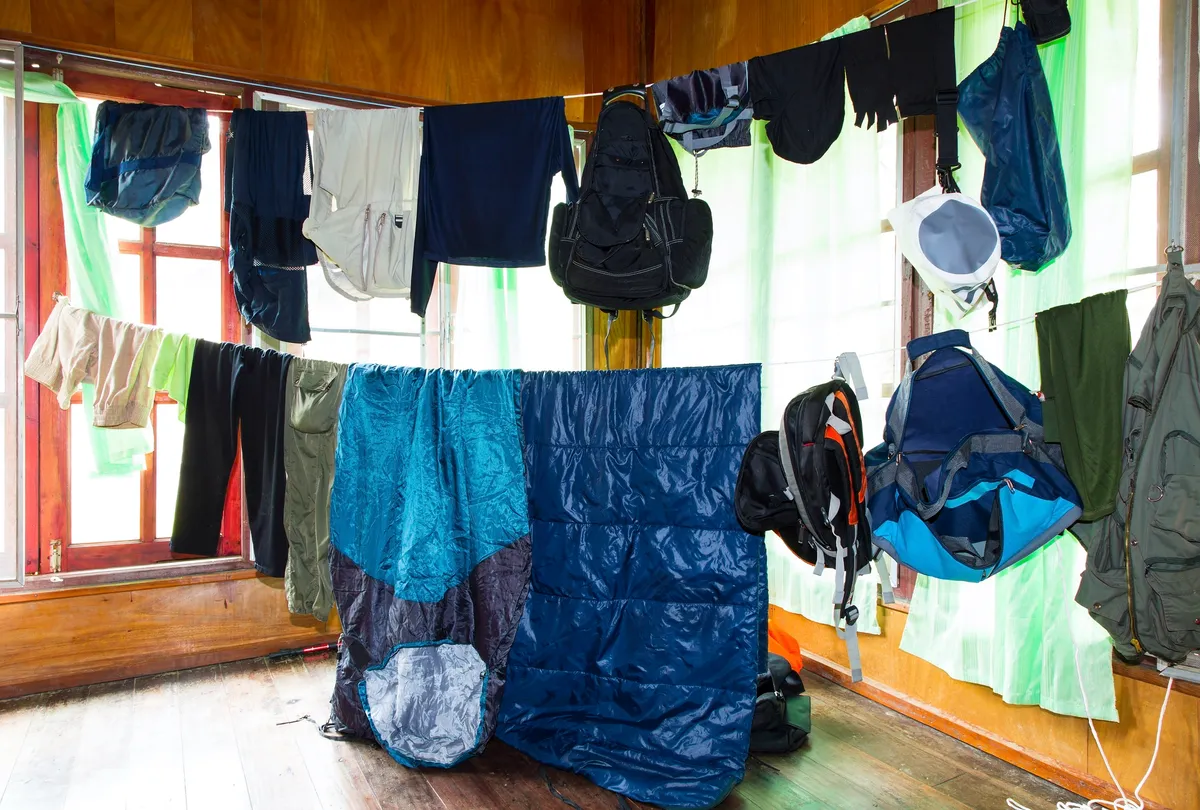
Washing your down sleeping bag
Carefully follow the instructions on the product. Some down products may be washed in a front-loading washing machine – they may require a large-capacity one. Others will have to be hand-washed in a bath. Some require specialist liquid wash, which may restore the water-repellent applied to the down. Nikwax and Grangers are leading brands.
If you are hand-washing, it’s important not to try to pick up a down bag when it’s soaking wet: it will be so heavy that seams may split or fabric may tear internally. First pull out the plug in the bathtub, and let as much water as possible drain away. Then roll the wet bag up from one end, gently squeezing out the water. Now it should be light enough to lift without damage.
Drying your down sleeping bag
Once washed, the down will be soggy, clotting together in uneven lumps inside the bag.
Follow the manufacturer’s instructions. Some recommend hand-drying. This may take some time. During the drying process, to restore the loft of the down – in other words, to open up the tiny fibres of the drying down, making it fluffy – repeatedly turn the bag and shake or manually tease apart any bunched-up areas of down.
Alternatively, tumble dry (but again, first check the instructions; you may need to use a large commercial drier, like the ones in launderettes). As you do so, keep an eye on the bag to make sure that as the loft of the down is restored, the bag doesn’t swell to the point where if fills the drum and stops turning with the drum. This may cause hot patches that melt the fabric.
To help restore the loft (of fluffiness) of the down in the tumble dryer, it will help to add a couple of tennis balls. The impact of the balls agitates the down, helping to shake it around and spread it more evenly through the baffles (the series of long, sewn ‘tubes’ filled with down, which comprise your sleeping bag). Even so, you’ll need to inspect the dried bag to make sure the down hasn’t bunched up anywhere, leaving insulation gaps inside the baffles. Gaps like these will leave cold patches that will have you shivering on a chilly night. If there are any gaps, and there probably will be, you’ll have to massage and manipulate the down along the baffle with your fingers, to fill the empty space.
Phew... all done. Now enjoy your adventures.
For more camping gear reviews, discover the best walking boots, and the best walking shoes.
Words by Joe Pontin
